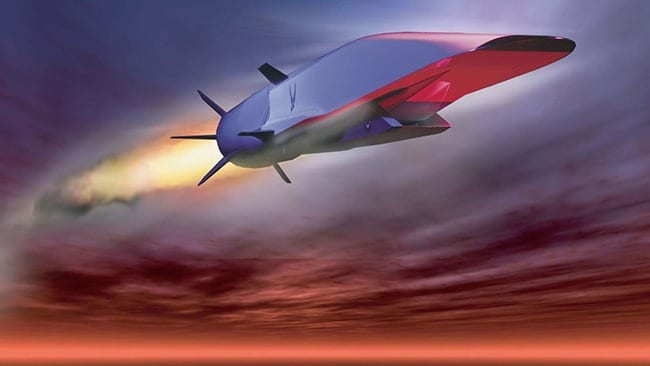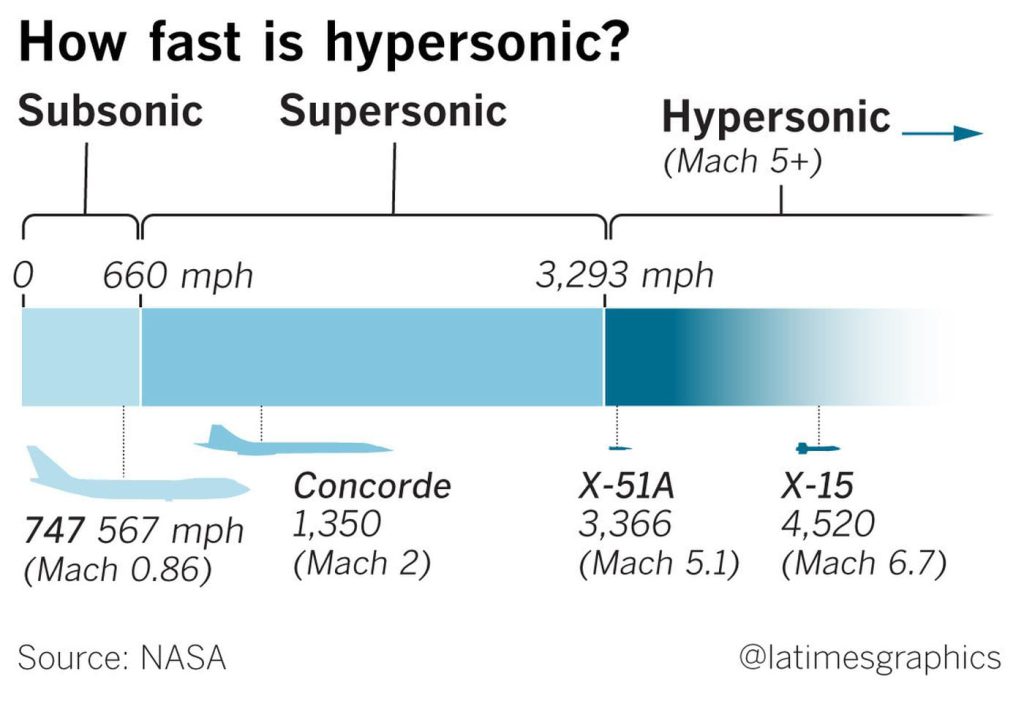
Editor: Vlad Rothstein | Tactical Investor
The era of hypersonic flight
The sleek aircraft, really more rocket than plane, dropped from the wing of a B-52 before shooting through the sky above Point Mugu Sea Range off the California coast, leaving a long, white contrail in its wake.
The unmanned X-51A hit Mach 4.8, almost five times the speed of sound, with help from a solid rocket booster. Then the Boeing Co. aircraft jettisoned the booster and its experimental scramjet engine took over, sucking in highly-compressed air to propel the vehicle even faster — to a hypersonic speed of about 3,400 mph, or Mach 5.1.

The aircraft relied on that scramjet for only 3½ minutes during the 2013 test flight, but researchers say reliable technology that propels aircraft to hypersonic speeds of Mach 5 or higher could be functional within 10 years, initially for use in missiles.
Russia and China are also developing hypersonic missiles and maybe closer to deploying them.
On Thursday, Russian President Vladimir Putin said in an annual national address that the country had developed new nuclear weapons that could bypass current missile defence systems. One of those weapons, he said, was a hypersonic missile. Read more
Washington (CNN)The U.S. Air Force aims to develop an unmanned flying weapon by 2023 that would travel at least five times the speed of sound and might transform the nature of warfare.
“The key thing is, hypersonics go really fast,” outgoing Air Force chief scientist Mica Endsley told CNN Thursday, after announcing the target date for the new aircraft last week.
The Pentagon has been experimenting with unmanned hypersonic aircraft for years, launching them from bombers over the Pacific with limited success.
For a vehicle to be considered hypersonic, it must travel at least at Mach 5 — five times the speed of sound, or about 3,800 mph. That’s fast enough to travel across the U.S. in around 30 minutes.
The tests were a part of a $300-million military project that was conceived in 2004. The first test took place in 2009. In the 2013 test, the Waverider reached Mach 5 before crashing into the ocean, as intended. Read more
Boeing is working on plans for a hypersonic passenger aircraft that would cut the journey time between London and New York to around two hours.
The concept jet, unveiled by the US aviation firm this week, would have a potential top speed of more than 3,800mph – close to five times the speed of sound.
An average flight on a traditional, subsonic passenger plane between London and New York takes around six hours and 45 minutes.
“When you look at the problem of getting from point A to point B anywhere in the world, the question is how fast do you want to go and how fast is fast enough?” Kevin Bowcutt, Boeing’s chief scientist of hypersonics told Aviation Week.
The company has stepped up its research in hypersonic flight in recent months and unveiled designs for an intelligence, surveillance and reconnaissance (ISR) military jet capable of reaching Mach 5 in January. Read more
Other Articles of Interest
Stock Market Insanity Trend is Gathering Momentum (Jan 10)
Is value investing Dead (Jan 9)
Irrational markets and Foolish Investor: perfect recipe for disaster (Jan 5)
Stock market Crash Myths and Realities (Jan 3)
Bull-Bear Markets & Arrogance (Jan 1)
Will The Stock Market Crash In 2018 (Dec 11)
Has US Dollar Finally Hit Bottom (Dec 6)
BitCoin Has Done What Precious Metals Never Could (Dec 4)
Experts Making Stock Market Crash Forecasts usually know nothing (Nov 17)
1987 stock market crash anniversary discussions- nothing but rubbish ( Oct 24)
Dow 22K Predicted In July 2017; Next Target Dow 30k? (Oct 15)
Anxiety and Greed Index Don’t Support Stock Market Crash (Oct 14)
Fed States Inflation is not an issue? (Oct 13)
Is Bitcoin a Bubble or Good Investment? (Oct 9)


